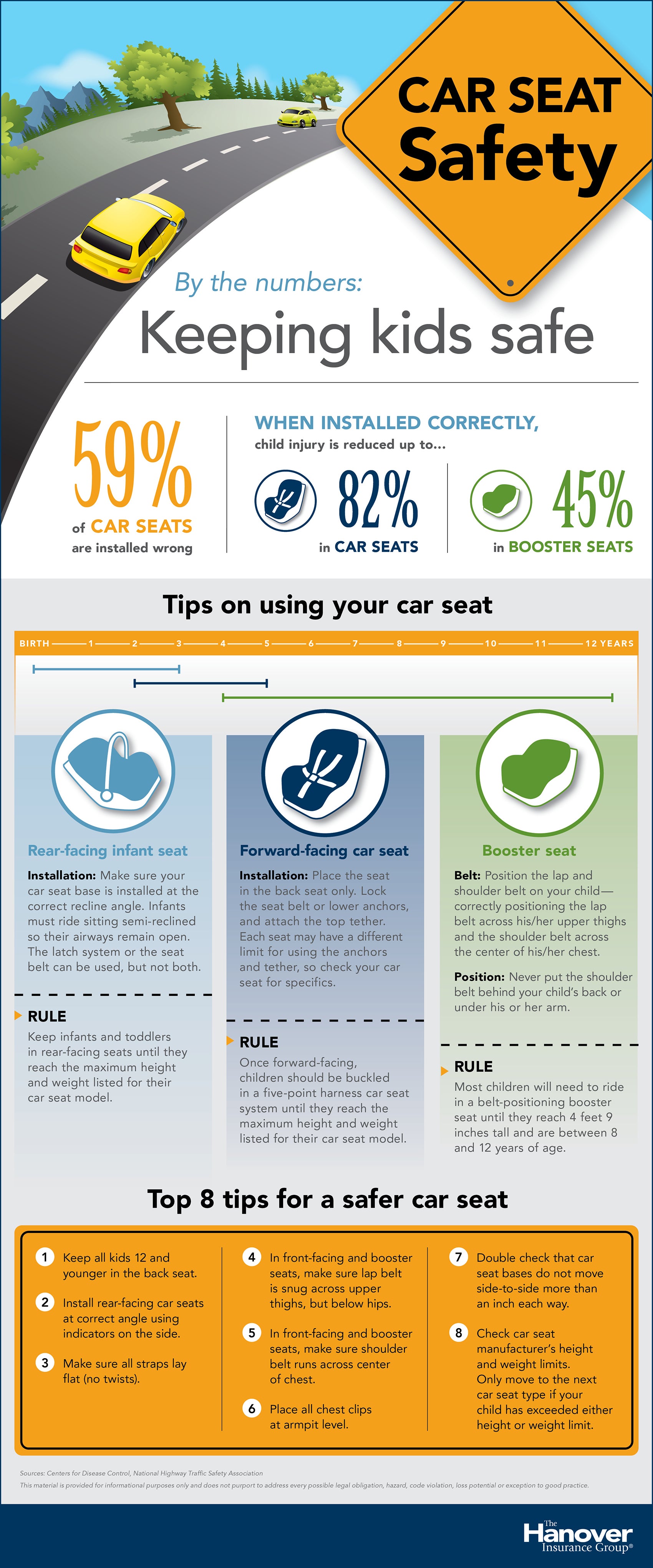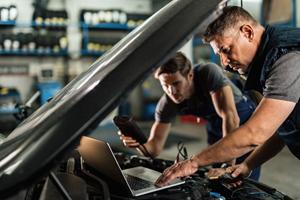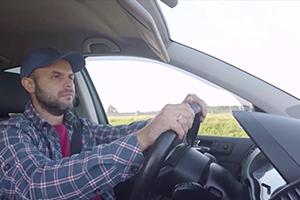Stay safe and buckle up
Choosing the right car seat, installing it correctly and using it every trip can make all the difference in saving a life. The tips above offer pointers for parents about rear-facing infant, forward-facing and booster seats.
Related resources
Stay safe and buckle up
Choosing the right car seat, installing it correctly and using it every trip can make all the difference in saving a life. The tips above offer pointers for parents about rear-facing infant, forward-facing and booster seats.
Related resources
Stay safe and buckle up

Choosing the right car seat, installing it correctly and using it every trip can make all the difference in saving a life. The tips above offer pointers for parents about rear-facing infant, forward-facing and booster seats.
- Infographic transcript
-
Car seat safety
By the numbers: Keeping children safe
59% of car seats are installed wrong
When installed correctly, child injury is reduced up to:
82% in car seats 45% in booster seats8. Check car seat manufacturer's height and weight limits. Only move to the next car seat type if your child has exceeded either height or weight limit.
Sources: Centers for Disease Control, National Highway Traffic Safety Administration
This material is provided for informational purposes and does not purport to address every possible legal obligation, hazard, code violation, loss potential or exception to good practice.
Top 8 tips for a safer car seat
1. Keep all kids 12 and younger in the back seat.
2. Install rear-facing car seats at correct angle using indicators on the side.
3. Make sure all straps lay flat (no twists).
4. In front-facing and booster seats, make sure lap belt is snug across upper thighs, but below hips.
5. In front-facing and booster seats, make sure shoulder belt runs across center of chest,
6. Place all chest clips at armpit level.
7. Double check that car seat bases do not move side-to-side more than an inch each way.
Booster seat
Belt: Position the lap and shoulder belt on your child – correctly positioning the lap belt across his/her upper thighs and the shoulder belt across the center of his/her chest. Position: Never put the shoulder belt behind your child's back or under his or her arm. Rule: Most children will need to ride in a belt-positioning booster seat until they reach 4 feet 9 inches tall and are between 8 and 12 years of age.Forward-facing car seat
Installation: Place the seat in the back seat only. Lock the seat belt or lower anchors, and attach the top tether. Each seat may have a different limit for using the anchors and tether, so check your car seat for specifics. Rule: Once forward-facing, children should be buckled in a five-point harness car seat system until they reach the maximum height and weight listed for their car seat model.Tips on using your car seat
Rear-facing infant seat
Installation: Make sure your car seat base is installed at the correct recline angle. Infants must ride sitting semi-reclined so their airways remain open. The latch system or the seat belt can be used, but not both. Rule: Keep infants and toddlers in rear-facing seats until they reach the maximum height and weight listed for their car seat model.
Related resources
Stay safe and buckle up

Choosing the right car seat, installing it correctly and using it every trip can make all the difference in saving a life. The tips above offer pointers for parents about rear-facing infant, forward-facing and booster seats.





